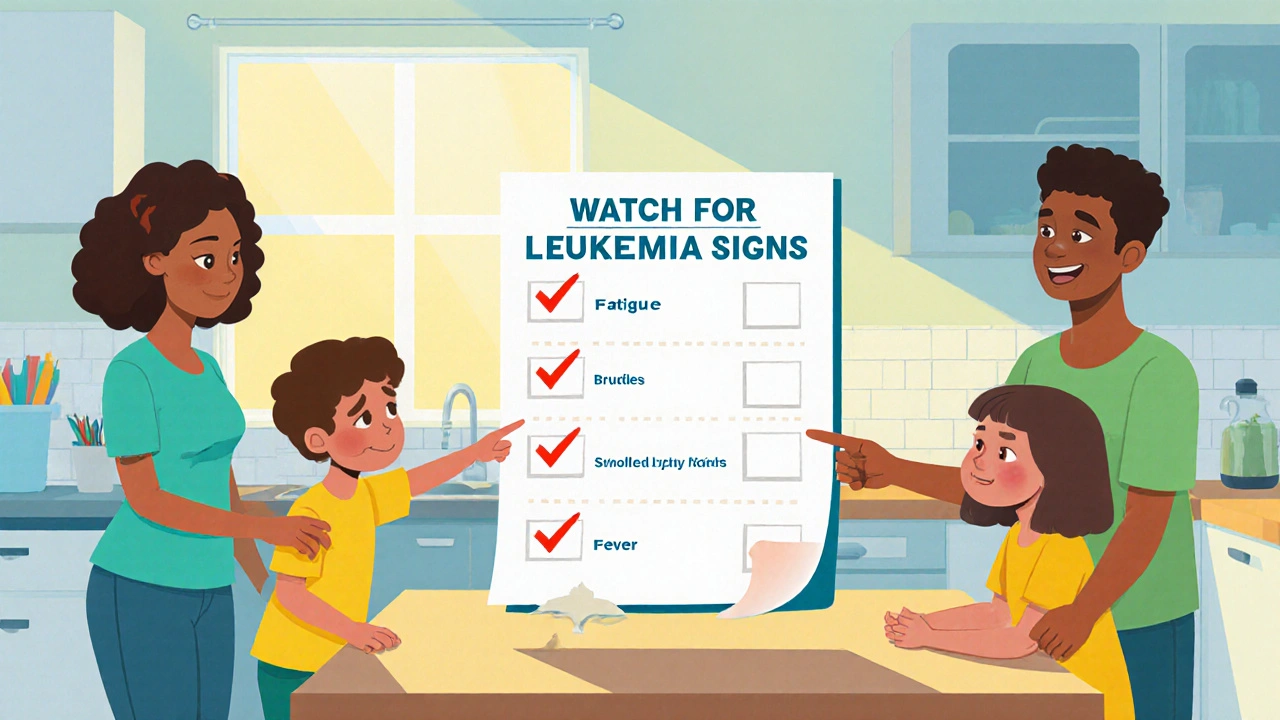
Early Detection in Leukemia: Critical Signs You Should Know
Learn why early detection of leukemia matters, recognize key warning signs, understand diagnostic steps, and get practical tips to act fast and improve outcomes.
When it comes to leukemia, a type of blood cancer that starts in the bone marrow and floods the bloodstream with abnormal white blood cells. Also known as blood cancer, it doesn’t always show up with dramatic symptoms at first. But catching it early—before it spreads or overwhelms the body—can make all the difference in treatment success and survival. Many people mistake early signs of leukemia for the flu, fatigue from stress, or just getting older. That’s dangerous. Leukemia doesn’t wait. It creeps in quietly, and the longer it goes undetected, the harder it becomes to treat.
The real clue often shows up in routine blood tests. A simple white blood cell count, a standard part of a complete blood count (CBC) that measures the number and type of white blood cells that’s way too high—or way too low—can be the first red flag. It’s not just about the number, though. The shape, maturity, and mix of those cells matter too. Abnormal cells called blasts, which should only exist in bone marrow, showing up in your bloodstream? That’s a major warning sign. And if your platelets or red blood cells are dropping without explanation, that’s another piece of the puzzle. These aren’t rare anomalies. They’re the most common early indicators doctors look for.
Other symptoms are easy to brush off: unexplained bruising, tiny red spots under the skin (petechiae), night sweats that soak your sheets, fever without infection, or bones that ache for no reason. Fatigue that doesn’t go away after rest? That’s not just being tired—it’s your body struggling because healthy red blood cells are being pushed out by cancerous ones. And if you’re getting infections over and over, your immune system isn’t working right. These aren’t vague complaints. They’re biological signals your body is screaming to you. Yet too many people wait months, even years, before seeing a doctor. By then, the cancer has had time to grow.
Early diagnosis doesn’t mean waiting for a crisis. It means asking for a blood test when something feels off—even if you can’t put your finger on it. A bone marrow test, a procedure where a small sample is taken from the hip bone to examine blood cell production is the only way to confirm leukemia, but it’s not the first step. Blood work comes first. And if your doctor dismisses your concerns because you’re "too young" or "not sick enough," get a second opinion. Leukemia doesn’t care about age or assumptions.
The posts below don’t just list symptoms. They show you what real cases look like, what tests actually reveal, and how early detection changes outcomes. You’ll find real-world examples of people who caught it early—and what they did next. No fluff. No guesswork. Just clear, practical info that helps you recognize the signs before it’s too late.

Learn why early detection of leukemia matters, recognize key warning signs, understand diagnostic steps, and get practical tips to act fast and improve outcomes.